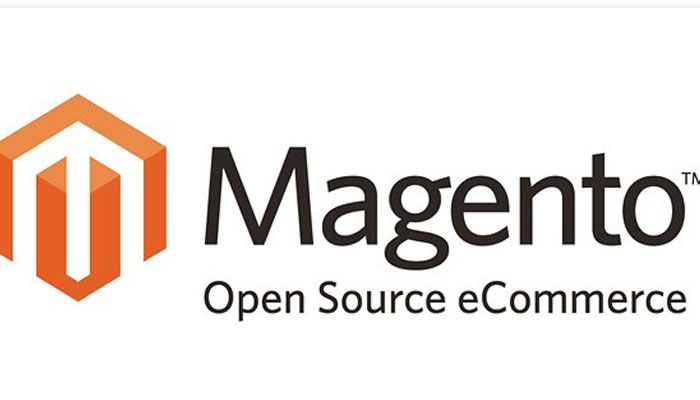E-commerce Platforms 2020: E-commerce business has yet to fully flourish. However, e-commerce industry giants like Magento, WooCommerce, Shopify, Opencart, BigCommerce, and many others are leaving no stone unturned to expand their market share and make an indelible expression in the realm of e-commerce.
Still, the hot question remains unanswered “What are 2020 ‘s best e-commerce platforms?” “The only way to answer this daunting question is to thoroughly review and analyze the functionality, security, performance, number of users, customer reviews and ratings, and various other crucial aspects of every prominent e-commerce platform.
Magento – E-commerce Platforms 2020

Magento is currently one of both the most popular and one of the most sought-after e-commerce platforms among merchants worldwide. Magento offers 2 editions according to the merchant’s business needs: Magento open-source edition and the Magento trade edition. Not many people know that merchants from all over the world have sold $155 billion worth of goods and services through the Magento platform which is a staggering figure. The Magento e-commerce platform has the trust of millions when it comes to offering performance, security, and stability at a single place.
The best part about the Magento platform is that it releases new versions in a timely manner to upgrade the functionality of the platform and fix security loopholes.
1. Platform Functionalities
- Merchant can integrate various channels, and sell from a single platform to both businesses and consumers.
- It allows merchants to integrate ERP, progressive studio of web applications, inventory management, shipping, order management, customer service, business intelligence, and the list continues.
- Magento is an open and customizable platform. You can deploy the performance of the cloud, scale-up platform, integrate APIs, and boost the performance of the platform.
2. SEO
The Magento platform, on average, boasts an SEO score between 90 to 95, which is brilliant from an SEO perspective. Magento SEO score is the second-highest after Shopify and WooCommerce platforms. The key reason SEO score is ridiculously high on the Magento platform is that it is extremely SEO-optimized in advance. In addition, Magento offers a myriad of SEO settings such as optimizing meta tags, optimizing the image, editing robots.txt file, canonical product tags, etc.
3. User-Friendliness – E-commerce Platforms 2020
Earlier Magento versions such as Magento 1.X and 2.2.X were not as user friendly as Shopify was. The pristine version of the Magento platform, which is Magento 2.3.3, is however much more user-friendly and easier to understand. For those individuals who have significant technical knowledge, Magento is seamless to use. If you want to familiarize yourself with the Magento platform, unlike Shopify, you must devote a good chunk of your time.
4. Pricing and Additional Costs
When we’re talking about the Magento platform pricing, there are two options for merchants. There are two editions of Magento, as we know: Community edition and Enterprise edition. Magento’s open-source edition is free to download and use, or better say the community edition. The attributes in the open-source editions are however quite fettered. This edition represents an ideal choice for small businesses.
Another edition is the company edition which is an exemplary option for large enterprises. The Community edition pricing depends on the size of your business. Besides the costing of the platform, there are hosting charges and plugin charges that you will later integrate to amplify the performance of your e-commerce platform. Overall the cost of running a Magento instance e-commerce platform is budget-friendly.
5. Customer Service and Support
The degree of customer support varies from the open-source edition of Magento to the trade edition of Magento. As the community edition of Magento is free to download and use, its customer support is fairly fettered and low. Users of the Magento community edition don’t get full official support. They can however find relevant information about the developer’s forum. But if you use additional enterprise, you will receive technical support from Magento by excellent customer support and services.
Pro Tip: If you are using the open-source edition of Magento, you should have a competent developer to take care of the security and maintenance of your platform, because Magento will not provide external support for community edition.
6. Security and Performance
The latest version of Magento 2.3 has commendable security and efficient rendering capability for performance. A considerable number of security changes and upgrades have been made in the new Magento 2.3.3 version to make the security unassailable and impeccable.
Magento 2.3 New Security Functions
- Password encryption improvement
- Upgrade to cross-site scripting
- Upgrading library support
- Recaptcha Checkout
The newly released version of Magento 2.3 boasts the top performance of the line. A gargantuan number of improvements were made to ensure maximum efficiency and stability were derived from the platform.
Magento 2.3 Features on Performance
- Better shipping and billing retention
- Enhanced Address System
- Excellent optimization of page load
In short, if you choose Magento ‘s latest instance to run your e-commerce store, you don’t have to worry a bit about the security and performance aspects.
7. User Ratings and Reviews
Customers have given Magento products incredible ratings on prestigious platforms such as Merchant Maverick and Apptha. The ratings and reviews outline the utmost satisfaction of the customers. We can, therefore, say that Magento products are worth considering for running e-commerce businesses on a small and large scale.
8. Themes and Designs
Magento marketplace offers a colossal riveting, highly responsive, and user-friendly selection of themes that are far too exemplary to put on your website. All the Magento marketplace listed themes are customizable, affordable, and highly responsive. Besides the Magento market place, there are other sources, such as ThemeForest, from which you can buy the coveted Magento theme at a reasonable cost.
9. Pros and Cons
Pros
- Free to download (open source)
- Spotless security
- Millions of active users, who guarantee credibility
- Highly sturdy, stable and adaptable platform
- Very Scalable
Cons
- Strong technical knowledge needed for platform operation
- Customer support limited in the Community edition
- The steep curve on learning
WooCommerce

WooCommerce is presumably the most used and efficient e-commerce platform in the world. Not many people know that WooCommerce is neither a complete system for contents management nor a complete framework. It is a WordPress powered and developed plugin that is free to use.
WooCommerce is a very convenient, affordable, and a low-key option for those merchants who don’t want to spend a fortune building a full e-commerce platform. Its utter simplicity is one of the key reasons why WooCommerce is massively popular among merchants worldwide. Any layman can build a website from scratch on WooCommerce, and develop an attractive e-commerce store. WooCommerce covers 30% of the overall e-commerce market share, which is a staggering number, according to the 2018 survey conducted by a leading consulting agency.
1. Platform Functionalities
- WooCommerce has more than 1000 free plugins and 300 extensions that are sufficient to run successful WooCommerce e-commerce business without too many hitches.
- WooCommerce is absolutely free when it comes to cost and pricing. However, you have to pay for a bit exorbitant hosting and SSL certificate.
- WooCommerce enables you to do listing management, order management, reporting and analytics, integration of courier shipping, integration of the marketplace, and the list goes on.
- WooCommerce’s other striking features include the coupon system, tax control, delivery settings, payment gateway, and more than 350 extensions and templates.
2. SEO
WooCommerce has the highest SEO score, after the Shopify platform. WooCommerce is greatly SEO friendly thanks to the wide range of plugins and customizations. As WooCommerce is fully built on the WordPress platform, it offers unrivaled potential for SEO. The WooCommerce SEO score is 97 percent monstrous.
3. User-Friendliness
WooCommerce is second to none when it comes to user-friendliness. It boasts a par-excellent user-friendliness level since it is a plugin, not a complete framework. The real challenge of the WooCommerce platform is to configure its store settings, and that’s a very demanding task.
When we are talking about ease of use, WooCommerce is much easier to use than platforms Magento and Shopify. WooCommerce has an interface that is quite seamless and powerful, making users visually amazing user experience.
4. Pricing and Additional Costs
From the above-mentioned comprehensive cost-structure of WooCommerce platform hosting, you can find out which hosting plan is exemplary for you. But that’s not it. You completely forget about the charges on the WooCommerce plugin and the SSL certificate. The official price of the WooCommerce extension is 29$ for those who don’t know.
5. Customer Service and Support
There’s quite a limited support for WooCommerce e-commerce platform, like the Magento community edition. All merchants and developers get access to the source code, and from there they can tackle issues and raise concerns about supporting WooCommerce. Don’t worry, WooCommerce also lets merchants “submit a support ticket” to get official support from WooCommerce for critical issues.
6. Security and Performance
When it comes to the security of their e-commerce platform, no merchant wants to compromise a bit. WooCommerce platform offers commendable security features to protect the data of merchants and other crucial information. Sometimes, however, you may be witnessing severe vulnerabilities and human errors that can be easily rectified if given properly during the initial problem stage.
7. Themes and Designs
When it comes to responsive and captivating themes and designs, WooCommerce definitely has the upper hands over Magento and Shopify. You can set your coveted themes on the WooCommerce store in no time by simply using a plugin. In addition, you can also use the right plugin for any WordPress theme.
WooCommerce offers a colossal selection of beautiful themes and templates that can be easily implemented in your store. If you don’t want to buy a theme, that’s not a problem. You can also use WooCommerce’s default theme called Storefront which is quite efficient, and like any other theme, eyeballs grabbing.
8. User Ratings and Reviews
A great chunk of users gave the WooCommerce and its services excellent reviews. Worthy of recommendation!
9. Pros and Cons
Pros
- Easy Installation
- Easy to customize
- A huge number of plugins to set up the store accordingly
- Compatible with most WordPress versions;
- Advance Security Plugins
Cons
- Some prominent WooCommerce extensions aren’t free
- The owner of the website has to take care of store maintenance or else the developer has to pay for that.
- Hard to meet e-commerce conversion funnel
- You also need to update WordPress along with plugins
Shopify

Shopify is one of the world’s leading e-commerce firms. Shopify is recognized by many as the best platform for running the e-commerce business and the point-of-sale retail system. Currently, more than 1,000,000 business owners worldwide use Shopify e-commerce platform services and the numbers are rising at a staggering rate.
Shopify gives you full control over all the coding on your website (HTML and CSS). In addition, because of its unique and effective functionalities, Shopify is heavily preferred by business owners. One of Shopify’s striking features is that it has recently been integrated with Amazon which allows merchants to sell products via Shopify Admin Panel on Amazon.
1. Platform Functionalities
- Shopify automatically calculates shipping prices for each customer
- You can integrate Shopify with social media platforms such as Facebook to set up the whole shop on your Facebook page
- If you’re sick and tired of managing inventory, there’s no need to stress out. Shopify lets you drop-shipping and runs your online store without taking the entire inventory management load.
- In order to help you get the most out of your online store, Shopify promotes selected expert patterns in marketing, design, programming, so that according to your conscience, you can rope in the right expert and vamp up the performance of your shop.
2. SEO
When we talk about prominent e-commerce platforms with the best SE0 score, Shopify is second to none. Shopify has an excellent 98-100 SEO score which is far above all the prevailing e-commerce platforms. In addition, the Shopify platform includes all the SEO features such as the inclusion of Title tags, meta tags, ALT tags, optimization of Page URLs, optimization of images, and the list continues.
3. User-Friendliness
Shopify is amongst all the most user-friendly e-commerce platform by leaps and bounds. Shopify has the most seamless user experience, drag and drop options, easy to edit a theme that allows merchants to create for their customers an excellent user experience. Shopify has an engulfing admin panel for merchants and is easy to navigate. The shopping experience is as good for the users as any goliath e-commerce platform.
4. Pricing and Additional Costs
Shopify offers merchants 14 days of free trial to get up to speed with the Shopify platform before using it fully. The best thing about the free trial period is that you don’t have to feed any information about the payment to use the free version. Shopify ‘s basic e-commerce plan starts at $29, and the advance version goes up to $299. Considering the attributes in the various pricing plans of Shopify, the amount is worth investing in setting up an e-commerce store at Shopify.
5. Customer Service and Support
Here’s another pointer in which Shopify among all its competitors has a massive upper hand. Shopify provides support to its customers 24/7, and they can connect via phone, email, chat, or social media channels with the Shopify support team.
In addition, Shopify provides its merchants with valuable advice on a timely basis regarding the maintenance of the platform and guidelines to ensure that your e-commerce store remains free of failures.
6. Security and Performance
Shopify is as safe as any cutting-edge e-commerce platform. Not only is Shopify considered by most merchants to be the most secure e-commerce platform according to recent research conducted by a leading consultancy agency. Most of the merchants have given Shopify safety and performance no less than 5 stars at various prominent platforms.
7. Themes and Designs
Shopify has a fabulous theme store from which you can buy out of 100 themes a highly responsive, SEO-friendly, and enriching user-experience theme. Shopify offers approximately 10 free website templates. In the Shopify theme store, the price of paid themes starts at $140.
8. User Ratings and Reviews
Customers are more than happy to be running their online business using the Shopify e-commerce platform. In a nutshell, Shopify is a highly recommended platform without much of a hitch for running an e-commerce business.
9. Pros and Cons
Pros
- Shopify offers hosting services that are built-in.
- Most e-commerce platform SEO friendly.
- Shopify offers the services of a 14-day trial. No other platform has that to offer.
- Themes and plugins can augment your store functionalities.
- Aid to the Shopify Community 24/7.
Cons
- Compared with other e-commerce platforms, quite exorbitant.
- In Shopify, the hosting service is also expensive.
- Compared with other platforms Shopify has the highest.
- Themes and plugins are numerically limited.
- Most plugins and themes are pretty heavy in price.
Opencart

If you want to run a small or medium-sized business, none of the platforms can cater as much to your online business needs as Opencart does. It is a free and open-source e-commerce platform based on a PHP framework that adds an added advantage to the merchants. Opencart offers the highest number of customization options to scale up your business as compared to other e-commerce platforms. The basic Opencart store installation involves no add-ons. You need to purchase the paid version of Opencart, which includes numerous add-ons and attributes, to boost your business growth, however.
Not many merchants know that Opencart 2.0 makes it possible for merchants to access the admin panel through admin. About 1 million websites use Opencart’s e-commerce features to run their online business in a full-fledged way.
1. Platform Functionalities
- Opencart offers merchants more than 8 modes of shipping
- There are over 20 payment gateways that you can integrate with your e-commerce platform Opencart. This is the highest number of integrated payment gateways that any e-commerce platform has to offer.
- Opencart ‘s level of SEO optimization is quite moderate. However, by adding the right theme and plugins, you can take Opencart SEO optimization notches higher.
- A limitless number of products can be added to an Opencart e-commerce store.
2. SEO
Although Opencart ‘s SEO score is significantly low compared to other e-commerce platforms, the Opencart SEO score can be optimized by making the title, meta description, keywords, and alt tags pivotal adjustments in the images. To perform SEO optimization in an Opencart e-commerce store, you need a moderate level of technical knowledge.
3. User-Friendliness
Opencart ranks way higher than most e-commerce platforms when it comes to user-friendliness. The Opencart platform’s interface and user experience are highly immersing and responsive. User-friendliness is more than platform Magento but a little less than platform WooCommerce is.
Even if you don’t have a smidgen of coding knowledge, Opencart still allows you to make significant changes to configure your store according to your preferences.
4. Pricing and Additional Costs
When it comes to user-friendliness, Opencart ranks way higher than most e-commerce platforms. The interface and user experience of the Opencart platform is highly immersive and responsive. User-friendliness is more than the Magento platform but slightly less than the WooCommerce platform is.
Even if you don’t have a smidgen of knowledge about coding, Opencart still allows you to make significant changes to configure your store according to your preferences.
5. Customer Service and Support
Opencart renders top of the line and two types of support to stand apart from the competitors: community support and dedicated support. If you use the platform that is free and open-source, you can get the support for free. However, you have to pay for the dedicated support to rectify your technical issues when using the advanced version. Opencart doesn’t offer its customers 24/7 support.
6. Security and Performance
The security of your e-commerce store is the primary concern for merchants. A single security glitch can weaken the performance of the website in no time. Overall the Opencart platform ‘s security is quite satisfactory. The main concern, however, arises when you are using the Opencart extensions. Most of the Opencart extensions are developed by third-party CMS and Opencart’s technical team has not been much scrutinized. It ultimately puts credibility on the question of making Opencart extensions. Opencart ‘s e-commerce platform performance is quite similar to that of other e-commerce giants.
7. Themes and Designs
Opencart offers a towering number of themes and templates according to your domain of business. From clothing and apparel to food and beverages, home accessories, tech, and gadgets, the Opencart theme store offers a huge range of professional themes at a nominal price.
There are both free and paid themes that are highly responsive, seemingly riveting, and SEO friendly. To run the store properly and implement the themes and extensions you should have a basic knowledge of the HTML, CSS, and JavaScript. Additionally, an amazing selection of Opencart themes and extensions can be found on third party sources.
8. User Ratings and Reviews
User ratings of Opencart indicate that, while it’s not perfect, it still is a pretty decent product. It is mostly preferred by small and medium-sized businesses.
9. Pros and Cons
Pros
- Community aid, though not available 24/7, is formidable.
- Lots of themes, plugins, and extensions.
- The Admin panel is easy for merchants to navigate
- High performance, and free download.
Cons
- CSS and JavaScript may be used to perplex non-programmer merchants.
- Moderate functionalities.
- Less credibility of the third party paid plugins.
- Finding too many errors whilst updating.
Conclusion
Based on the meticulous analysis stated above, you can easily figure out which platform is exemplary for running your e-commerce business. What are you waiting for, then? Make your business grow stellar by selecting the best e-commerce platform for 2020.
If you’re a startup entrepreneur or a person in need to develop with an Intuitive e-commerce platform that delivers for your business, let’s get in touch! We have served many clients over the years and bring extensive experience on the table; We use the latest technologies to ensure the best end results.
Let us help you reach your business goals today! Discuss your project today!
























